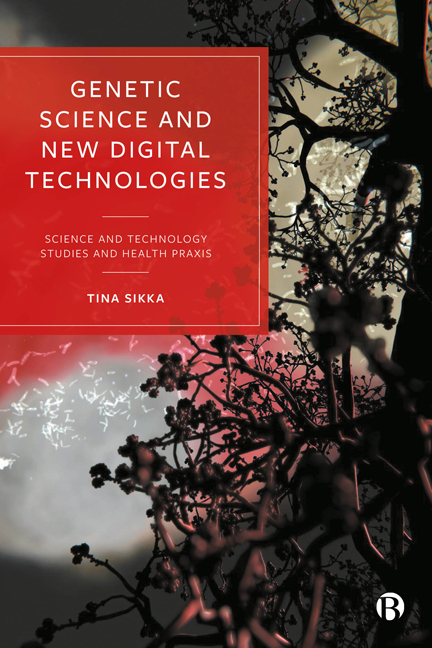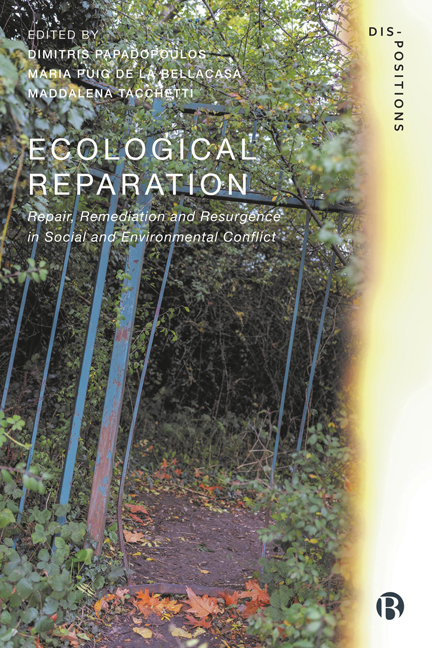Refine search
Actions for selected content:
12661 results in History of science

Darwin's Philosophy of Emotion
- Coming soon
-
- Expected online publication date:
- January 2026
- Print publication:
- 31 January 2026
-
- Book
- Export citation

Science Societies
- Resources for Life in a Technoscientific World
-
- Published by:
- Bristol University Press
- Published online:
- 16 April 2025
- Print publication:
- 26 November 2024
6 - Knowledge in Crisis
-
- Book:
- Science Societies
- Published by:
- Bristol University Press
- Published online:
- 16 April 2025
- Print publication:
- 26 November 2024, pp 99-122
-
- Chapter
- Export citation
1 - Introduction: Science Societies
-
- Book:
- Science Societies
- Published by:
- Bristol University Press
- Published online:
- 16 April 2025
- Print publication:
- 26 November 2024, pp 1-10
-
- Chapter
- Export citation
List of Boxes
-
- Book:
- Science Societies
- Published by:
- Bristol University Press
- Published online:
- 16 April 2025
- Print publication:
- 26 November 2024, pp iv-v
-
- Chapter
- Export citation
Index
-
- Book:
- Science Societies
- Published by:
- Bristol University Press
- Published online:
- 16 April 2025
- Print publication:
- 26 November 2024, pp 198-205
-
- Chapter
- Export citation
7 - Experts and Expertise
-
- Book:
- Science Societies
- Published by:
- Bristol University Press
- Published online:
- 16 April 2025
- Print publication:
- 26 November 2024, pp 123-142
-
- Chapter
- Export citation
2 - Histories and Imaginations
-
- Book:
- Science Societies
- Published by:
- Bristol University Press
- Published online:
- 16 April 2025
- Print publication:
- 26 November 2024, pp 11-34
-
- Chapter
- Export citation
Frontmatter
-
- Book:
- Science Societies
- Published by:
- Bristol University Press
- Published online:
- 16 April 2025
- Print publication:
- 26 November 2024, pp i-ii
-
- Chapter
- Export citation
9 - Technoscience, Power, and Justice
-
- Book:
- Science Societies
- Published by:
- Bristol University Press
- Published online:
- 16 April 2025
- Print publication:
- 26 November 2024, pp 171-194
-
- Chapter
- Export citation
10 - Conclusion: Resources for Life in a Technoscientific World
-
- Book:
- Science Societies
- Published by:
- Bristol University Press
- Published online:
- 16 April 2025
- Print publication:
- 26 November 2024, pp 195-197
-
- Chapter
- Export citation
3 - The Mutual Shaping of Technoscience and Society
-
- Book:
- Science Societies
- Published by:
- Bristol University Press
- Published online:
- 16 April 2025
- Print publication:
- 26 November 2024, pp 35-57
-
- Chapter
- Export citation
Contents
-
- Book:
- Science Societies
- Published by:
- Bristol University Press
- Published online:
- 16 April 2025
- Print publication:
- 26 November 2024, pp iii-iii
-
- Chapter
- Export citation
4 - Representing Science
-
- Book:
- Science Societies
- Published by:
- Bristol University Press
- Published online:
- 16 April 2025
- Print publication:
- 26 November 2024, pp 58-78
-
- Chapter
- Export citation
8 - Science and Governance
-
- Book:
- Science Societies
- Published by:
- Bristol University Press
- Published online:
- 16 April 2025
- Print publication:
- 26 November 2024, pp 143-170
-
- Chapter
- Export citation
5 - Public Engagements
-
- Book:
- Science Societies
- Published by:
- Bristol University Press
- Published online:
- 16 April 2025
- Print publication:
- 26 November 2024, pp 79-98
-
- Chapter
- Export citation
Acknowledgements
-
- Book:
- Science Societies
- Published by:
- Bristol University Press
- Published online:
- 16 April 2025
- Print publication:
- 26 November 2024, pp vi-viii
-
- Chapter
- Export citation

Genetic Science and New Digital Technologies
- Science and Technology Studies and Health Praxis
-
- Published by:
- Bristol University Press
- Published online:
- 28 March 2024
- Print publication:
- 26 October 2023

Ecological Reparation
- Repair, Remediation and Resurgence in Social and Environmental Conflict
-
- Published by:
- Bristol University Press
- Published online:
- 28 March 2024
- Print publication:
- 01 December 2023

Race and Socio-Cultural Inclusion in Science Communication
- Innovation, Decolonisation, and Transformation
-
- Published by:
- Bristol University Press
- Published online:
- 24 January 2024
- Print publication:
- 31 July 2023
